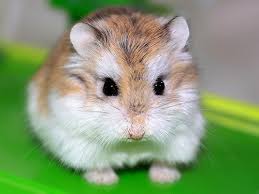
Taylor’s Hamster
Conditions of detention
Taylor’s Pygmy Hamsters require a small but well-ventilated cage with ample hiding spots and nesting material. They enjoy burrowing, so deep bedding is essential.
Useful Fact: These hamsters are more solitary and prefer to live alone, similar to Syrian hamsters, to avoid territorial disputes.
Nutrition and diet
A balanced diet includes a mix of seeds, grains, fresh vegetables, and occasional protein sources like insects.
Useful Fact: Avoid giving them foods high in sugar or fat, as they can be prone to obesity.
Health
Like other dwarf hamsters, they can be susceptible to diabetes and obesity.
Useful Fact: Regular check-ups and monitoring their diet can help prevent common health issues.
Grooming and care
They are self-grooming and usually do not require much help, but a clean living environment is crucial.
Useful Fact: Providing sand baths can help them maintain their coat and remove excess oils.
Education and training
Taylor’s Pygmy Hamsters can be tamed with gentle and consistent handling but may not respond to training as well as larger species.
Useful Fact: Patience is key when taming, as they are naturally shy and may take time to get used to handling.
Toys and entertainment
They enjoy tunnels, small wheels, and chew toys to keep them mentally and physically stimulated.
Useful Fact: Rotating toys periodically can keep them engaged and prevent boredom.
Safety
Ensure their cage is escape-proof, as they are small and can slip through tiny gaps.
Useful Fact: Keep their environment stable, avoiding sudden changes in temperature or loud noises.
Accessories
A small wheel, tunnels, a hideout, and chew toys are essential.
Useful Fact: Offer nesting material to encourage natural burrowing and nesting behaviors.
Socialization
They are generally solitary and do not need the company of other hamsters, which can lead to aggression.
Useful Fact: Regular, gentle handling from a young age helps them become more accustomed to human interaction.
Travel and Transportation
Use a secure, well-ventilated carrier with some bedding from their cage to keep them comfortable.
Useful Fact: Minimize travel time to reduce stress, as they are sensitive to environmental changes.
Behavior and psychology
Taylor’s Pygmy Hamsters are generally shy and less active than other species, but they can be curious and gentle when handled appropriately.
Useful Fact: Understanding their natural behaviors can help in creating a stress-free environment that caters to their needs.
Legal aspects
Ownership is generally unrestricted, but it’s advisable to check local laws, especially regarding exotic species.
Useful Fact: If considering breeding or selling, ensure compliance with local regulations to avoid legal complications.


